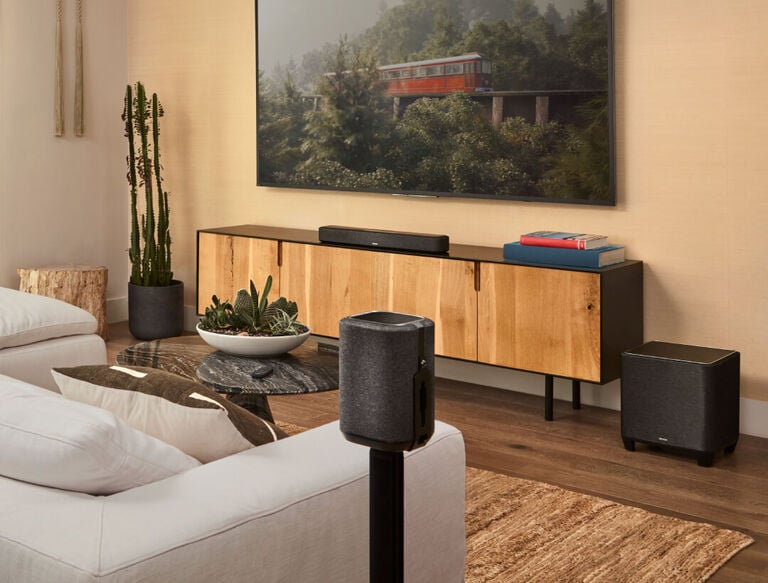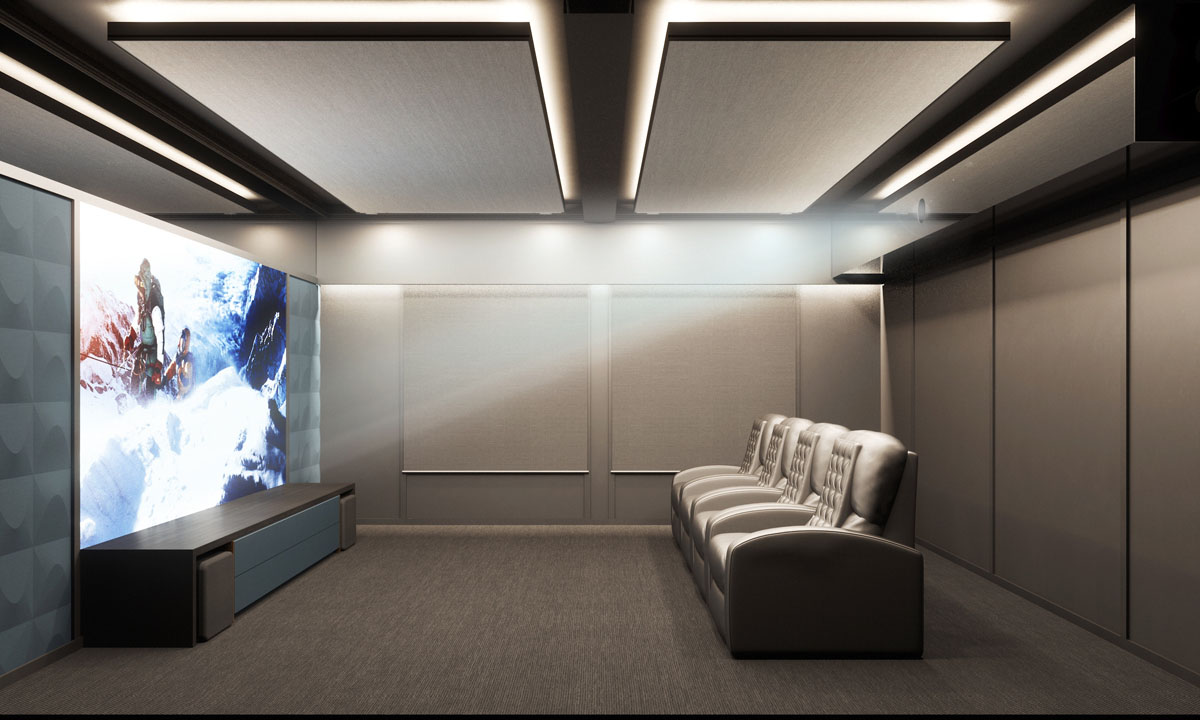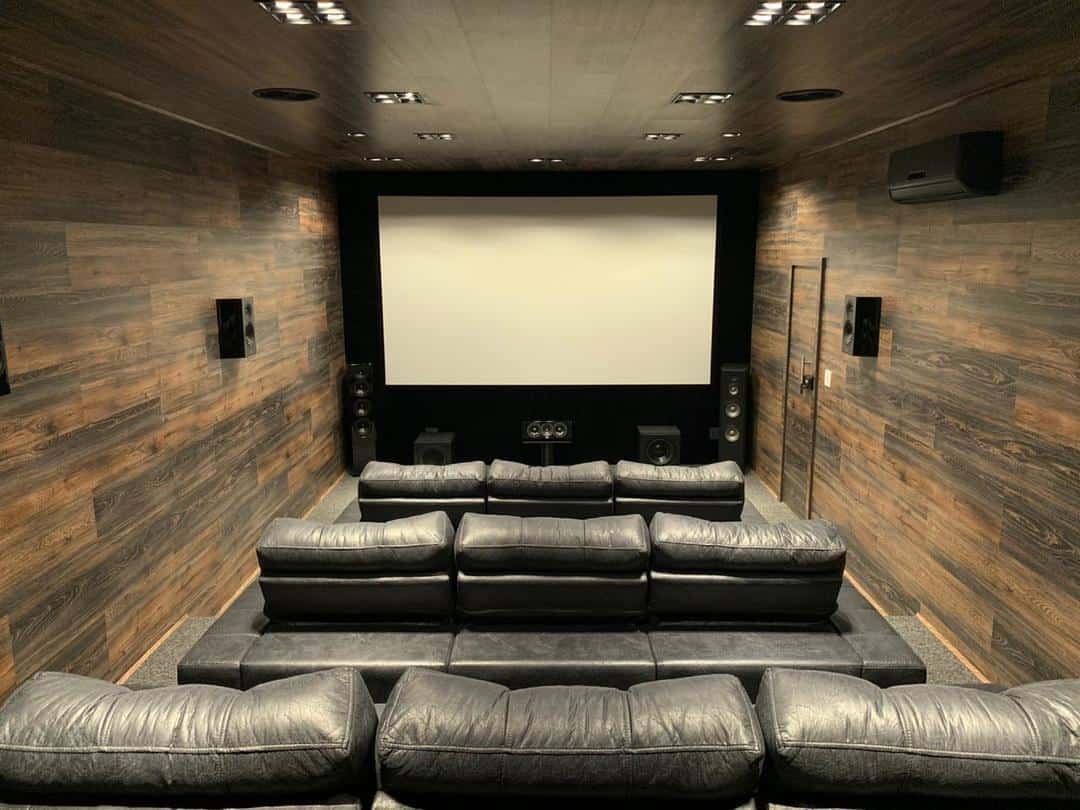Home Theater 101: Every Little Thing You Need to Know for a Motion Picture Experience at Home
Developing a home theater that rivals the motion picture experience of a commercial theater includes cautious factor to consider of numerous components, including screen selection, stereo, and space design. Each component plays an essential role in attaining the preferred ambiance and capability. Whether you are considering the perfect screen size or the complexities of border audio, recognizing these basics is crucial. As we explore these vital components, it comes to be apparent that the selections made can substantially impact your overall watching experience, leaving one to contemplate how these choices will shape your individual cinema.
Selecting the Right Screen
When establishing a home movie theater, picking the right display can make or damage the seeing experience - tampa home theater installation. The display acts as the centerpiece of your setup, influencing image quality, checking out angles, and total visual. Trick aspects to take into consideration include display type, resolution, and dimension
Initially, figure out the appropriate display size based on your room measurements and seating range. Next off, choose between various display types, such as fixed-frame, mechanized, or retracting screens, each offering distinct benefits.
Resolution is another important aspect. For a genuinely immersive experience, consider a screen created for 4K and even 8K content, making sure intensity and clarity. Furthermore, take into consideration the display's gain, which affects illumination and comparison; a greater gain can enhance brightness in well-lit rooms, while a reduced gain may be extra ideal for darker atmospheres.
Choosing Audio Equipment
Audio equipment is an important part of any type of home cinema system, considerably enhancing the overall watching experience. The choice of audio equipment can determine the deepness, clearness, and immersion of sound, critical for producing a motion picture environment.
When selecting audio devices, consider a border sound system, which normally consists of a receiver, multiple speakers, and a speaker. A 5.1 or 7.1 network system is recommended, where the very first number stands for the audio speakers and the second the speaker, providing an immersive soundscape. The receiver is the heart of the system, handling audio and video clip signals, and should sustain modern-day formats like Dolby Atmos for a boosted spatial experience.
Quality audio speakers are essential; seek designs that provide a well balanced audio account with great bass feedback. Floor-standing speakers can produce richer noise, while bookshelf options conserve space. In addition, take into consideration cordless alternatives for convenience of installment, although wired systems typically provide exceptional performance.

Optimum Seating Arrangements
Developing an ideal home theater experience pivots significantly on optimum seating arrangements. The setup of seats plays an essential function in both comfort and watching top quality, directly influencing the general motion picture experience.
First, think about the display dimension and checking out range. A common standard is to position seats at a range about 1.5 to 2.5 times the angled dimension of the display. This makes sure an immersive experience without stressing the eyes.
Following, elevation is crucial. The back rows ought to be higher than the front to stay clear of obstructions if your seats is in a tiered layout. For flat seats, make certain that the front row is not too near to the screen, which everybody has a clear line of sight.
Moreover, take into consideration the plan in terms of social characteristics. Group seating can improve the common experience, while private seats might be favored for personal watching.

Lastly, focus on convenience with ergonomic seats that sustains prolonged watching periods. Integrating recliner chairs or cushioned seats can significantly boost the experience, making the home theater a preferred destination for both entertainment and relaxation.
Lighting and Setting
Reliable lights and setting are vital elements of a well-designed home cinema, as they considerably influence the viewing experience. The best lighting can boost the motion picture feeling, while inadequate options can diminish it. For optimum outcomes, consider a layered lights approach that includes ambient, task, and accent lighting.
Ambient lighting offers basic illumination, making sure that the area is not completely dark, which can stress the eyes. Dimmer buttons are extremely advised, enabling adjustments based upon the material being seen. Job lighting, such as wall surface sconces or flooring lamps, provides functional lighting for activities like analysis or browsing the area without disrupting the general ambience.
Accent lights can be used to highlight building functions or produce focal points, adding depth and rate of interest to the area. LED strip lights behind screens or along racks can supply a subtle glow that improves the visual experience without frustrating the customer.

Wiring and Installation Tips
A well-planned wiring arrangement is crucial for attaining optimum efficiency in your house movie theater system. Proper circuitry not just makes sure top quality sound and video clip signals however also boosts the total visual of your space. Begin by drawing up your design, determining where each component will certainly be put, including your screen, audio speakers, and receiver.
When picking cords, prioritize high-quality, suitably evaluated electrical tampa home theater installation wiring to decrease signal loss. HDMI cords should be made use of for video clip connections, while audio speaker cable should match the requirements of your audio speakers and amplifier. Go with in-wall rated cords to adhere to safety and security requirements and preserve a tidy look.

Final Thought
In recap, creating an outstanding home cinema experience calls for careful consideration of various components, consisting of display option, audio tools, seating setups, lights, and circuitry. By focusing on these aspects, a motion picture atmosphere can be effectively reproduced, allowing for immersive watching experiences that rival traditional cinema setups.
Creating a home cinema that matches the cinematic experience of a business theatre involves mindful factor to consider of numerous elements, including display choice, audio systems, and room format.When establishing up a home cinema, picking the appropriate display can make or break the seeing experience. Next, choose between numerous display types, such as fixed-frame, mechanized, or retracting displays, each offering unique advantages. For a really immersive experience, consider a screen created for 4K or even 8K content, making certain intensity and clearness.In recap, creating an outstanding home cinema experience needs cautious consideration of numerous aspects, consisting of display selection, audio tools, seating plans, lighting, and circuitry.